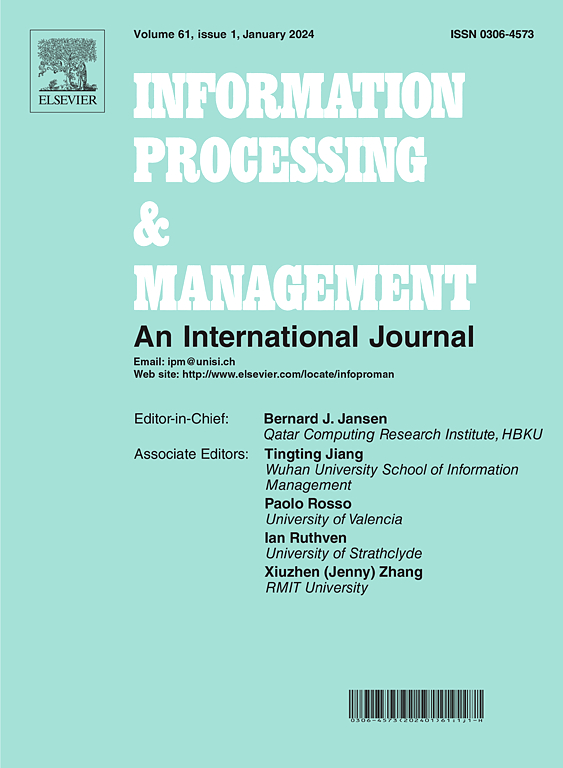A semantic framework for enhancing pseudo-relevance feedback with soft negative sampling and contrastive learning
IF 7.4
1区 管理学
Q1 COMPUTER SCIENCE, INFORMATION SYSTEMS
引用次数: 0
Abstract
In the field of information Retrieval (IR), Pseudo-relevance feedback (PRF) and Query Expansion (QE) techniques have garnered significant attention for their efficacy in enhancing retrieval effectiveness. However, traditional PRF approaches predominantly concentrate solely on pseudo-relevant documents identified during the initial retrieval stage, neglecting the rich semantic information embedded within non-pseudo-relevant documents. This paper introduces an innovative PRF model that integrates soft negative samples and contrastive learning to address this limitation, aiming for a more comprehensive capture and representation of semantics. First, we employ the BM25 algorithm as the baseline retrieval mechanism to accurately pinpoint pseudo-relevant documents from the first stage retrieval and assign weights to their terms. Second, a contrastive learning strategy is introduced to distill semantic features from all documents globally, further refining the semantic weights of terms. To mitigate the risk of information loss associated with soft negative samples, we ingeniously leverage the statistical properties of kernel function to precisely gauge the co-occurrence frequencies between terms, ensuring the preservation of core information and thus obtaining kernel function term co-occurrence weights. Third, we select semantically related terms highly relevant to the query for creating an optimized query by balancing these three weight distributions. Extensive empirical analyses conducted on several TREC datasets demonstrate the practical feasibility of our proposed model. It outperforms baseline models and state-of-the-art technologies on core evaluation metrics such as MAP, P@10, NDCG, and MRR. Deeper comparative experiments and case studies reveal that the expansion terms generated by our model exhibits a deeper level of semantic coherence with the original query, underscoring the dual advantages of the model in both theory and practice. In summary, the model presented herein not only opens a new path at the technical level, but also provides a more accurate and efficient solution for real-world applications in IR.
求助全文
约1分钟内获得全文
求助全文
来源期刊

Information Processing & Management
工程技术-计算机:信息系统
CiteScore
17.00
自引率
11.60%
发文量
276
审稿时长
39 days
期刊介绍:
Information Processing and Management is dedicated to publishing cutting-edge original research at the convergence of computing and information science. Our scope encompasses theory, methods, and applications across various domains, including advertising, business, health, information science, information technology marketing, and social computing.
We aim to cater to the interests of both primary researchers and practitioners by offering an effective platform for the timely dissemination of advanced and topical issues in this interdisciplinary field. The journal places particular emphasis on original research articles, research survey articles, research method articles, and articles addressing critical applications of research. Join us in advancing knowledge and innovation at the intersection of computing and information science.
 求助内容:
求助内容: 应助结果提醒方式:
应助结果提醒方式:


